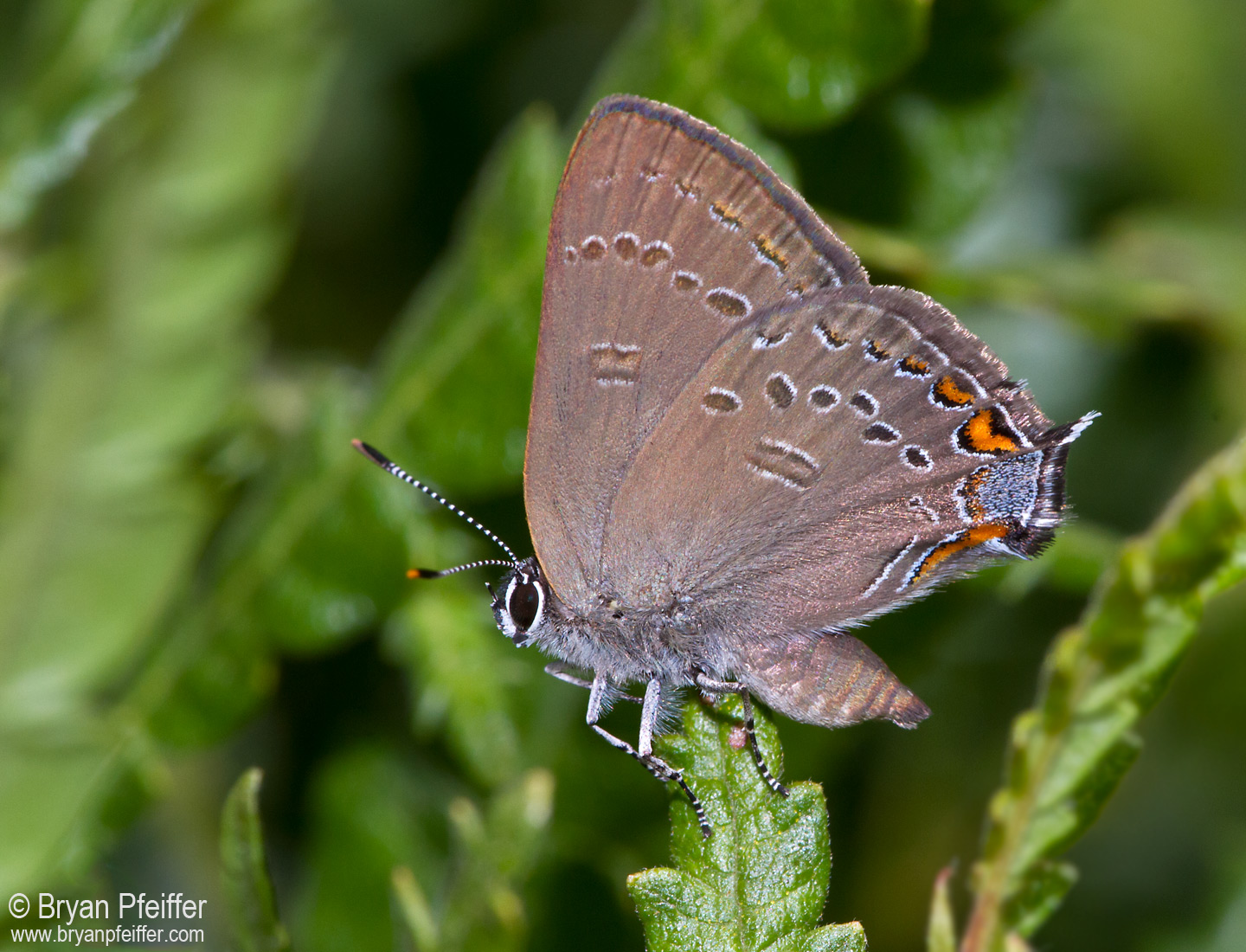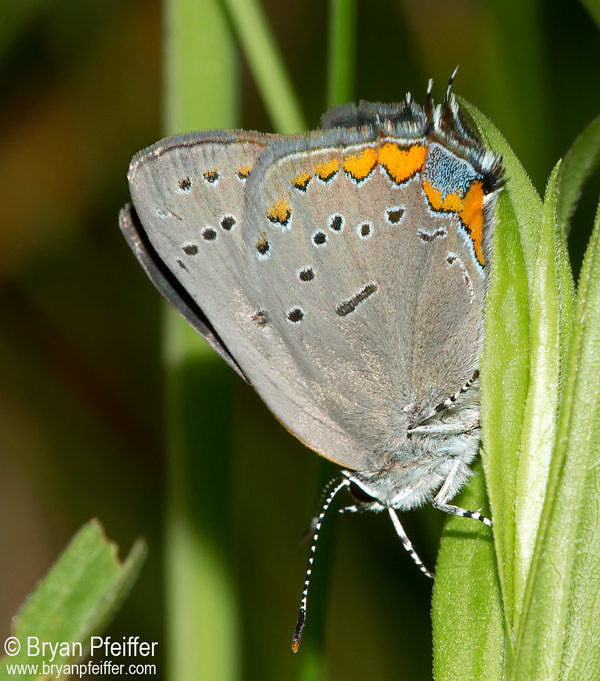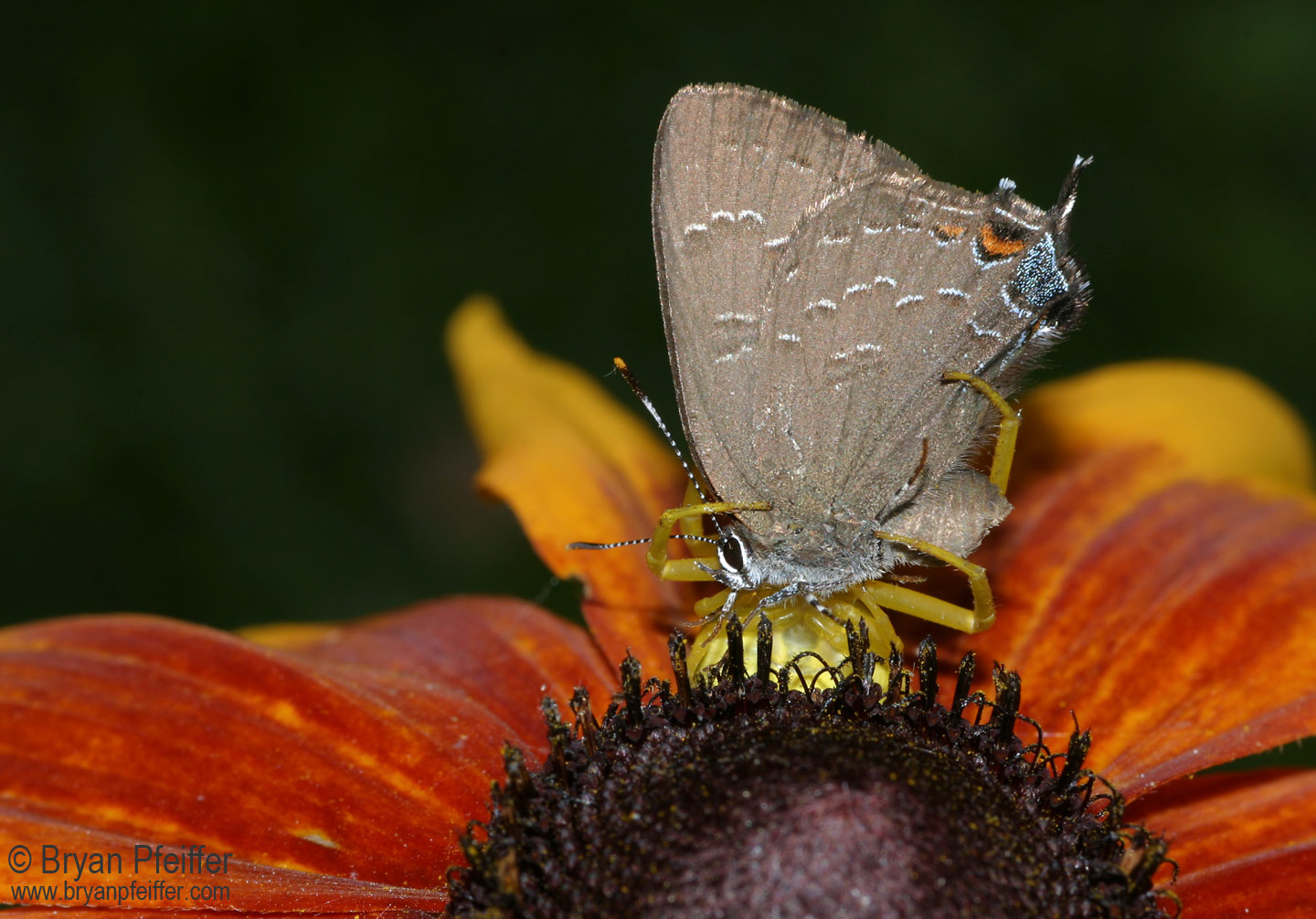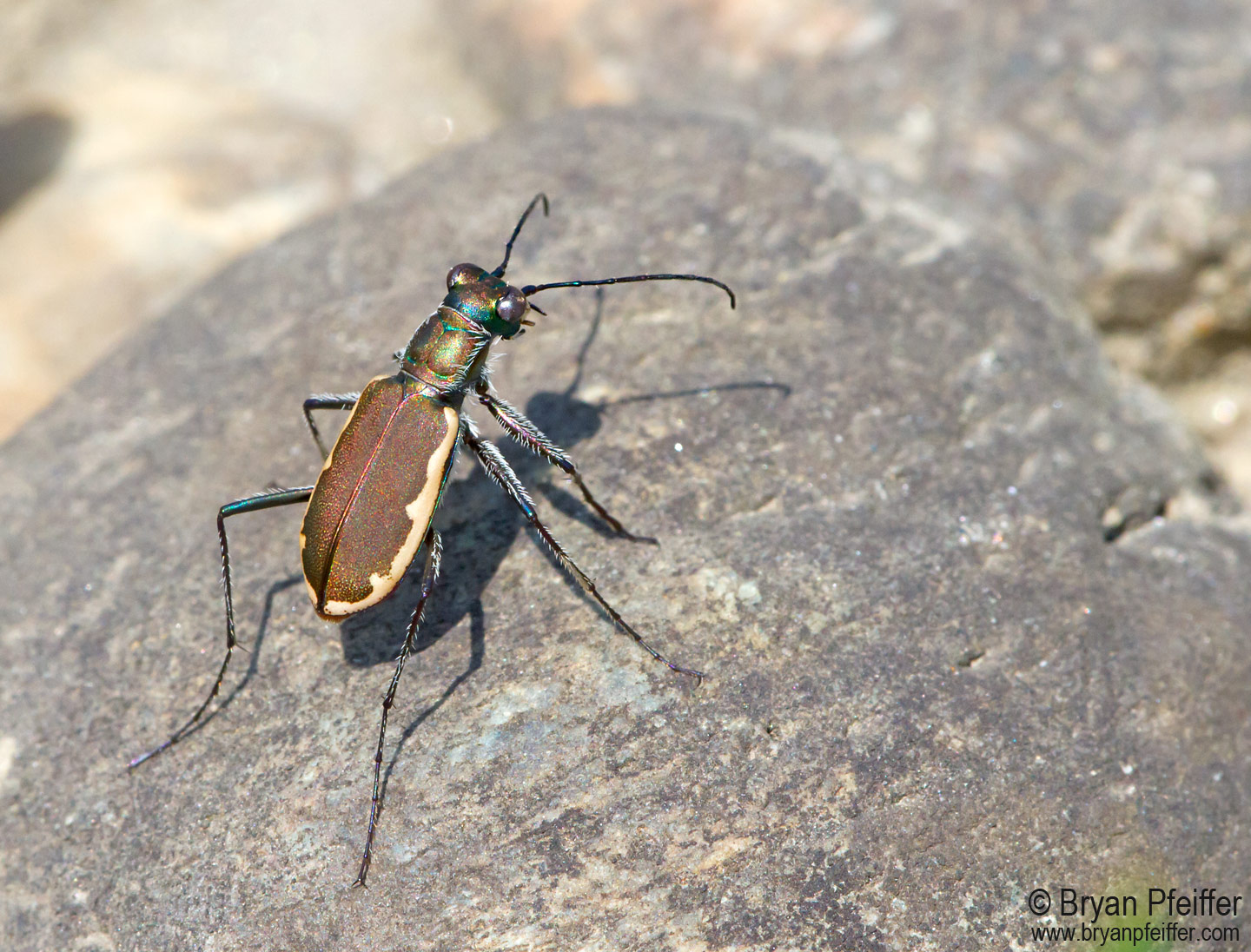The Week in Flying Things

Edward’s Hairstreak (Satyrium edwardsii) / © Bryan Pfeiffer
A state endangered butterfly. A globally vulnerable beetle. And a few common insects, including a lovely moth that resembles a pile of bird crap. So goes the week in flight.
Okay, a bit more than a week. Ten days ago, while working in Maine, I earned my pay by finding Edwards’ Hairstreak (Satyrium edwardsii), which is endangered in Maine. That’s the bug above, about the size of your thumbnail, posing on a sprig of sweetfern.
 If it’s summer, it is Satyrium season here in New England. These are the warblers of butterflies — small, smartly marked and prized among lepidopterists or anyone who cares to look for tiny gossamer gifts.
If it’s summer, it is Satyrium season here in New England. These are the warblers of butterflies — small, smartly marked and prized among lepidopterists or anyone who cares to look for tiny gossamer gifts.
While photographing Baltimore Checkerspots here in Vermont recently, my pal Josh Lincoln spotted my personal target for that day: Acadian Hairstreak (Satyrium acadia), which I hadn’t seen in a few years. We dropped to our knees and started shooting.
The search for hairstreaks begins with botany. To find Edwards’ Hairstreak, for example, you must find the plant on which it lays eggs: its host plant. Edwards’ host is a shrubby oak, literally Scrub Oak (Quercus ilicifolia). It’s a rare plant in Maine, which is why Edwards’ Hairstreak is rare in Maine as well.
Acadian Hairstreak uses various willow species as its host. With willows around us in that checkerspot wetland, my mind turned to Acadian Hairstreak — and there is appeared. (If only my mind could produce other butterflies like this.)
Then again, spiders can help produce butterflies as well. This Striped Hairstreak (Satyrium calanus) below posed for a photo in the flower garden — mostly because it lacked many options. It was caught in the grips of one of the crab spider species, many of which are the color of the flowers on which they wait for their unsuspecting prey.

Meanwhile, in other imperiled insect news, while searching for an undiscovered dragonfly in Vermont, Common Sanddragon (which remains undiscovered, but must be here somewhere), I managed to photograph Cobblestone Tiger Beetle (Cicindela marginipennis), which the International Union for Conservation of Nature (IUCN) lists as globally vulnerable. I’ll blog separately on this exceedingly rare insect. But here it is, posing among, yeah, cobblestones on an island in the Connecticut River. And below the tiger beetle, you’ll find various other insects, including a few moths coming to my UV light during the past week or so and that bird-poop mimic.


As Hannah pointed out, we might consider re-naming it “Mothpelier”.